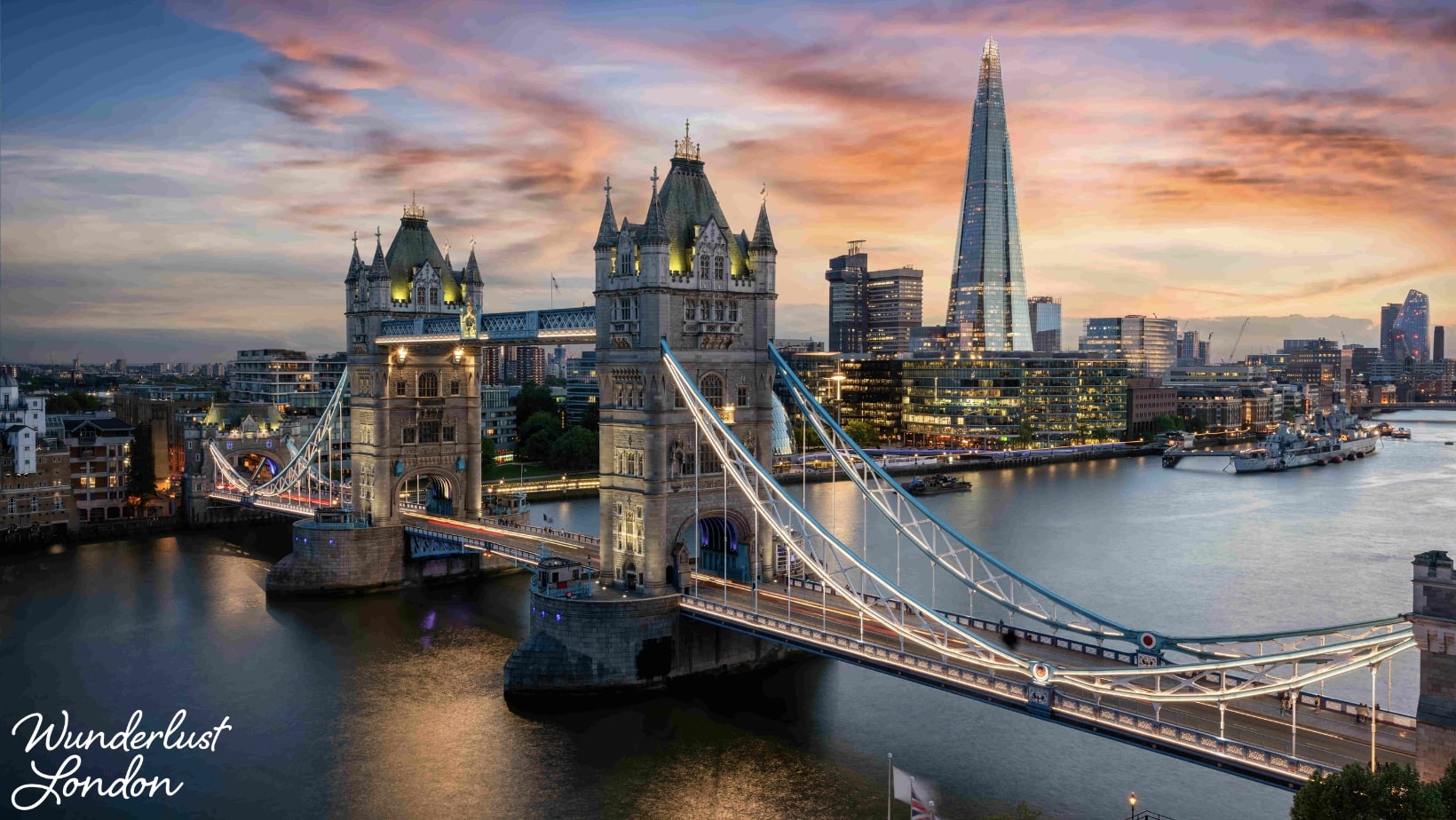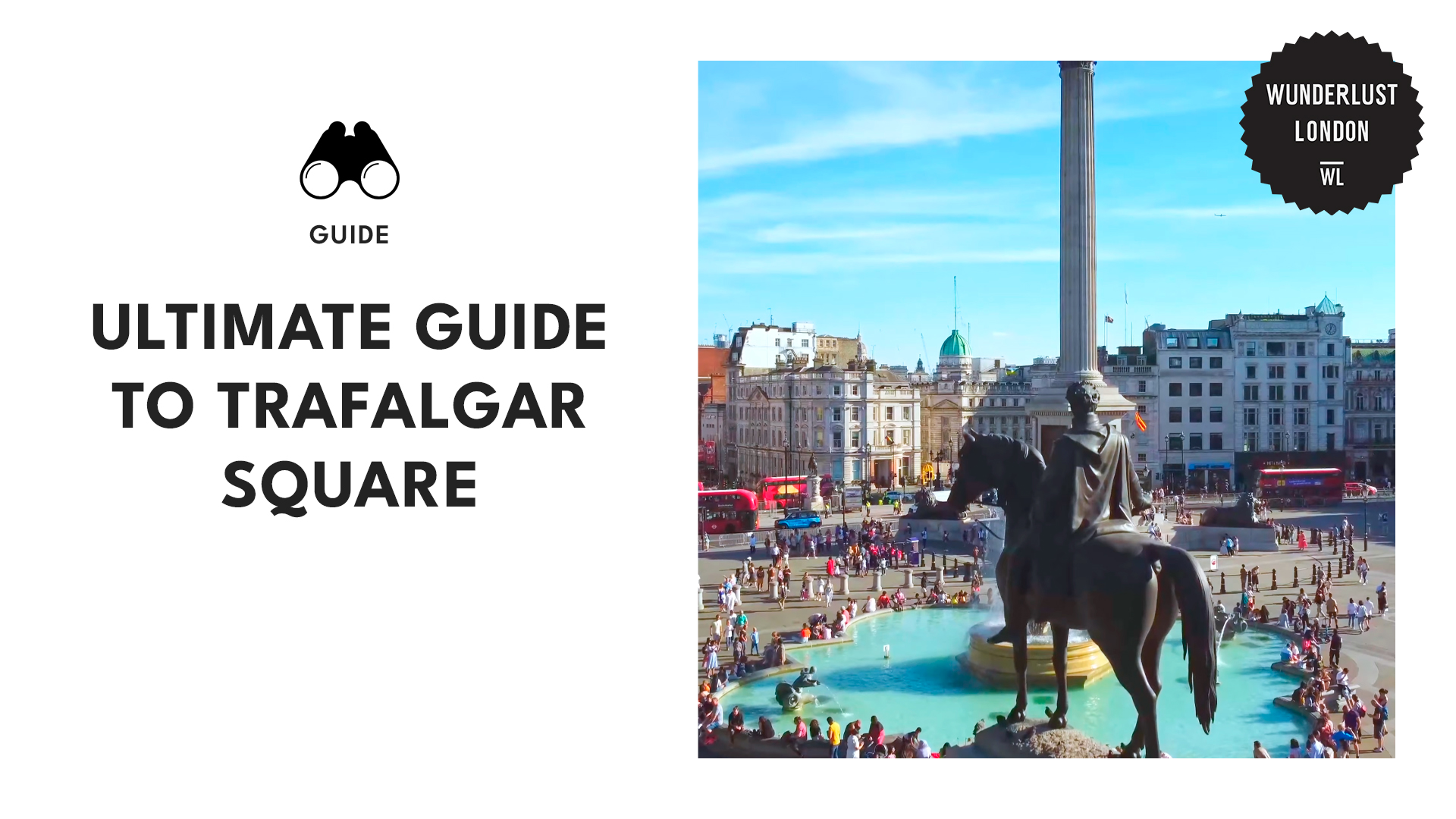Did you know that the London Tower Bridge is not just a remarkable structure but also a treasure chest brimming with captivating stories and intriguing facts? From its surprising origins to the secrets hidden within its towers, this iconic bridge is more than meets the eye.
So, hold onto your seats as we embark on a journey to unveil the fascinating and lesser-known facts that make the London Tower Bridge a true marvel of London’s history!
London Tower Bridge is often mistakenly called “London Bridge”, which is a different nearby bridge
Media from towerbridge
First things first, London Tower Bridge and London Bridge are two distinct structures, separated by the River Thames, but they’re so frequently mixed up that it’s almost become a London tradition.
So, why the mix-up? Well, one can blame a catchy nursery rhyme for some of the confusion.
“London Bridge is Falling Down” is a classic children’s song, and the image of a bridge collapsing has perpetuated the idea that the grand Tower Bridge is, in fact, the London Bridge in question.
It took eight years to construct the Tower Bridge, from 1886 to 1894
Media from towerbridge
The construction of this marvel began in 1886, and the clock started ticking over those eight long years. But what made it even more intriguing was the way the bridge was built. It was essentially a jigsaw puzzle of over 11,000 tons of steel and iron.
Each piece was meticulously crafted, transported to the site by river or road, and then pieced together like a giant, industrial Lego set. The result was a feat of engineering that stood tall against the test of time.
The bridge is a bascule and suspension bridge, combining both types of design
Media from towerbridge
Now, let’s break this down. Bascule, pronounced “bas-kewl”, is derived from the French word for “seesaw”. And that’s exactly how it works. Tower Bridge boasts two massive bascules, which are those see-saw-like sections at its centre.
Meanwhile, we have the suspension aspect. Think of the iconic Golden Gate Bridge in San Francisco. Those towering cables that suspend the bridge in mid-air? That’s the suspension part. Tower Bridge has those too, though they may not be as prominent as in San Fran.
The towers themselves serve as the anchor points for these suspension cables, adding to the bridge’s aesthetic appeal.
The bridge’s bascules are raised approximately 800 times each year
Media from towerbridge
Each time those bascules rise, it’s a carefully choreographed performance. The whole process takes just under five minutes, and it’s a symphony of cogs, gears, and hydraulics.
You can almost imagine the bridge winking at the passing ships, saying, “Don’t worry, we’ve got this”.
It was painted a chocolate-brown colour when it first opened but was later repainted in its iconic blue-and-white colour scheme
Media from towerbridge
You see, back in the day, it was all about blending in. The architects believed that a brown hue would help the bridge harmonise with the historic Tower of London nearby. Makes sense, doesn’t it?
But, as time went on, Londoners had a change of heart. They decided that their beloved bridge deserved more than just being a wallflower in the background.
So, in 1977, Tower Bridge got a makeover that would make any fashionista proud. It was repainted in its now-iconic blue and white colour scheme, a striking combination that instantly turned it into a showstopper.
The total length of the bridge is 800 feet
Media from towerbridge
The length of 800 feet allowed the architects to create intricate Gothic and Victorian elements that adorn the bridge.
Its towers, adorned with turrets and walkways, are reminiscent of a medieval castle, giving it a fairytale-like appearance that contrasts beautifully with the modern skyline of London.
The bridge’s hydraulic system uses water pumped from the Thames to operate the bascules
Media from towerbridge
So, how does this hydraulic magic work? Deep beneath the bridge, there are massive hydraulic chambers filled with water pumped directly from the Thames. When a ship needs to pass through, these chambers release the water into giant containers, or “accumulators”.
This surge of water pressure then does the heavy lifting, quite literally, as it forces the bascules to rise gracefully, creating a gap for the vessel to glide through.
During World War II, the bridge’s bascules were raised to deter enemy aircraft from flying underneath
Media from towerbridge
In the face of constant air raids and the relentless threat of enemy aircraft, Londoners needed a way to protect their beloved city. And that’s where Tower Bridge stepped in, quite literally. The ingenious idea was to raise the bridge’s bascules as a deterrent.
You see, enemy pilots flying menacingly low couldn’t resist the temptation of a gap to fly through. So, the bridgekeepers would regularly hoist those bascules skyward, essentially saying, “You shall not pass!” to any unwanted guests.
It has appeared in numerous films and TV shows, including James Bond’s “The Spy Who Loved Me”
Media from towerbridge
This 1977 Bond flick is a fan favourite, and for good reason. Not only does it feature Roger Moore at his suave best, but it also boasts some unforgettable action sequences.
Now, picture this: a heart-pounding car chase with Bond behind the wheel of a sleek Lotus Esprit, hurtling toward the Thames River.
The scene takes a breathtaking turn when the Lotus suddenly transforms into a submarine and plunges into the river’s depths. Where does this epic transformation occur? None other than under the majestic Tower Bridge.
In 1952, a double-decker bus famously jumped the gap when the bridge was opening, landing safely on the other side
Media from towerbridge
So, on that fateful day in 1952, as the bridge began its slow and graceful ascent to let a ship pass beneath it, something utterly unexpected happened.
A double-decker bus, driven by one Albert Gunter, found itself in a bit of a tight spot. Instead of panicking, our man Albert had nerves of steel and nerves of adventure.
What did he do? Well, he accelerated! He floored it and sped up, causing the bus to leap across the widening gap, Evel Knievel style.
And here’s the kicker – he made it! The bus landed safely on the other side, passengers and all as if it was just another day on London’s streets.
It is estimated that over 40,000 people cross Tower Bridge every day
Media from towerbridge
Think about the sheer volume here. 40,000 people! That’s like hosting a mini-festival on that iconic drawbridge every single day.
It’s a captivating glimpse into London’s vibrant rhythm, showcasing how a seemingly mundane structure can become an integral part of the city’s heartbeat.
Tower Bridge is lit up at night with more than 25,000 LED lights
Media from towerbridge
Tower Bridge’s nightly illumination serves a practical purpose too. These energy-efficient LED lights not only enhance the bridge’s aesthetic appeal but also contribute to reducing its carbon footprint.
In a world where sustainability is a buzzword, it’s heartwarming to see a historic landmark like Tower Bridge embrace modern technology to conserve energy.
Over 50 designs were Submitted for the Tower Bridge
Media from towerbridge
Imagine being in a room filled with blueprints, sketches, and models, each vying for the chance to shape the city’s future. It was like a design extravaganza, a Victorian-era version of a reality design show.
And what’s even more fascinating is that the winning design, the one we now know as Tower Bridge, wasn’t the initial front-runner. Nope, it had some stiff competition.
In fact, Sir Horace Jones and Sir John Wolfe Barry’s design only came third in the competition. It was an unexpected twist that saw a mashup of two competing designs rise to glory.
It is rumoured that Robert P. McCulloch mistakenly believed he was purchasing Tower Bridge when he bought London Bridge in 1968
Media from towerbridge
The mix-up happened when Mr McCulloch, who clearly skipped his geography lessons, thought he was buying the iconic Tower Bridge, complete with its majestic twin towers and Victorian charm.
But alas, he ended up with the rather less glamorous London Bridge, a relatively plain and unremarkable structure.
Now, here’s where it gets amusing. Instead of throwing in the towel and admitting his blunder, Mr McCulloch decided to roll with it. He had the London Bridge dismantled, shipped across the Atlantic, brick by brick, and reconstructed in Arizona!
The bridge has a sister bridge in Sacramento, California called the Tower Bridge too
Media from towerbridge
First things first, let’s talk about Sacramento’s Tower Bridge. This American counterpart is no slouch in the charm department. It’s a majestic vertical lift bridge that spans the Sacramento River, connecting the city of Sacramento with West Sacramento.
Built in the early 1930s, it carries a fair share of history and character, just like its British sibling. The design of the Sacramento Tower Bridge drew heavily from its British counterpart, embracing that distinctive Gothic style and the unmistakable “tower” elements.
A man once leapt from Tower Bridge with a parachute to extol the benefits of parachuting
Media from towerbridge
First off, you have to give props to this thrill-seeker’s commitment to his cause. Back in the early 20th century, parachuting wasn’t exactly a mainstream activity. It was more like a daredevil’s pastime, something that would raise eyebrows faster than you could say “gravity”.
But our intrepid jumper, bless his adventurous heart, saw an opportunity. Tower Bridge, with its iconic stature and grandeur, provided the perfect stage for his stunt.
He believed that by leaping from this architectural marvel and safely landing with a parachute, he could showcase the potential benefits of this newfangled contraption.
The Tower Bridge was built to appear older than it actually is
Media from towerbridge
When you cast your eyes upon London’s iconic Tower Bridge for the first time, it’s easy to fall under the spell of its medieval charm, isn’t it? It exudes a timeless aura as if it had been plucked straight from the pages of history.
But here’s the delightful twist – Tower Bridge isn’t a relic of medieval engineering.
The bridge was meticulously designed to seamlessly blend with its much older neighbour, the venerable Tower of London. The architects wanted the bridge to be a perfect partner for the historic tower, a harmonious duo that would tell a tale of London’s grandeur through the ages.
In 2012, the bridge hosted the Olympic Rings to celebrate the London Olympics
Media from towerbridge
The year was 2012, and London was buzzing with Olympic fever. The city was about to host the Summer Olympics, a monumental event that would draw athletes and spectators from every corner of the globe.
And what better way to get everyone into the Olympic spirit than to dress up one of London’s most beloved landmarks?
So to mark the momentous occasion, a gigantic set of Olympic Rings was suspended from the bridge’s majestic towers. These rings, representing the five continents and the unity of nations, hung proudly above the River Thames, casting a radiant glow across the city.
The estimated cost of the construction of the Tower Bridge was around £1,184,000
Media from towerbridge
Now, in today’s world of mega-infrastructure projects with budgets that seem to defy gravity, you might be thinking, “Is £1,184,000 really that astonishing?”
Well, let’s put it into perspective. We’re talking about the late 19th century, a time when top hats and horse-drawn carriages were all the rage. In those days, this amount was a colossal sum, equivalent to a princely fortune in modern currency.
In fact, £1,184,000 is equivalent to £143 million in today’s money. That’s… a lot.







